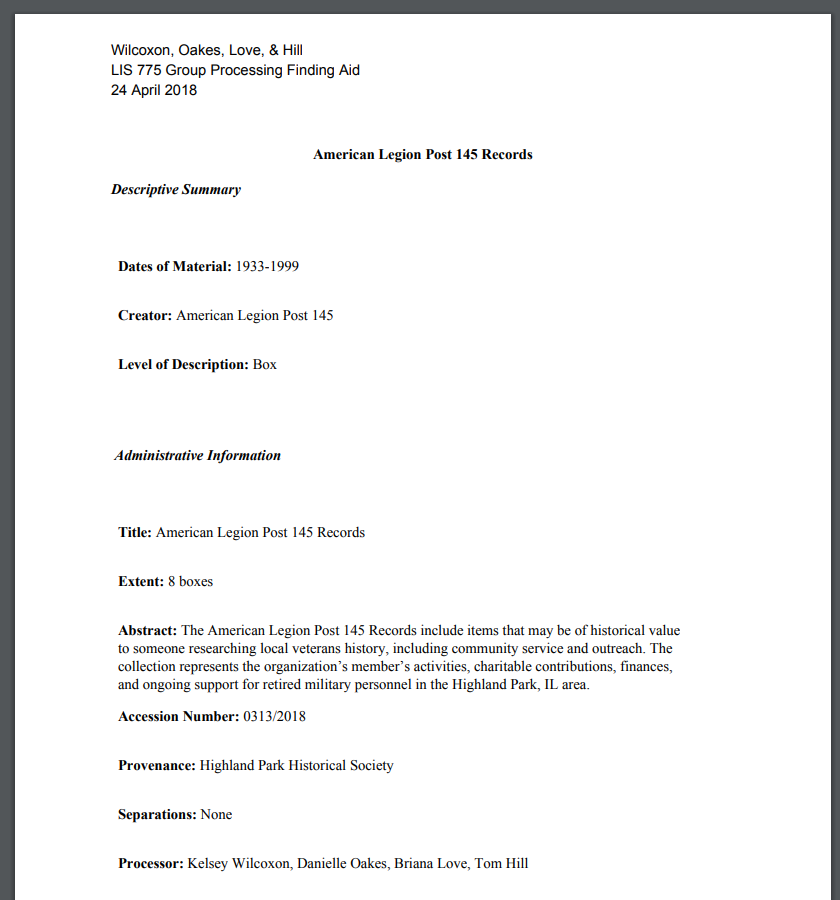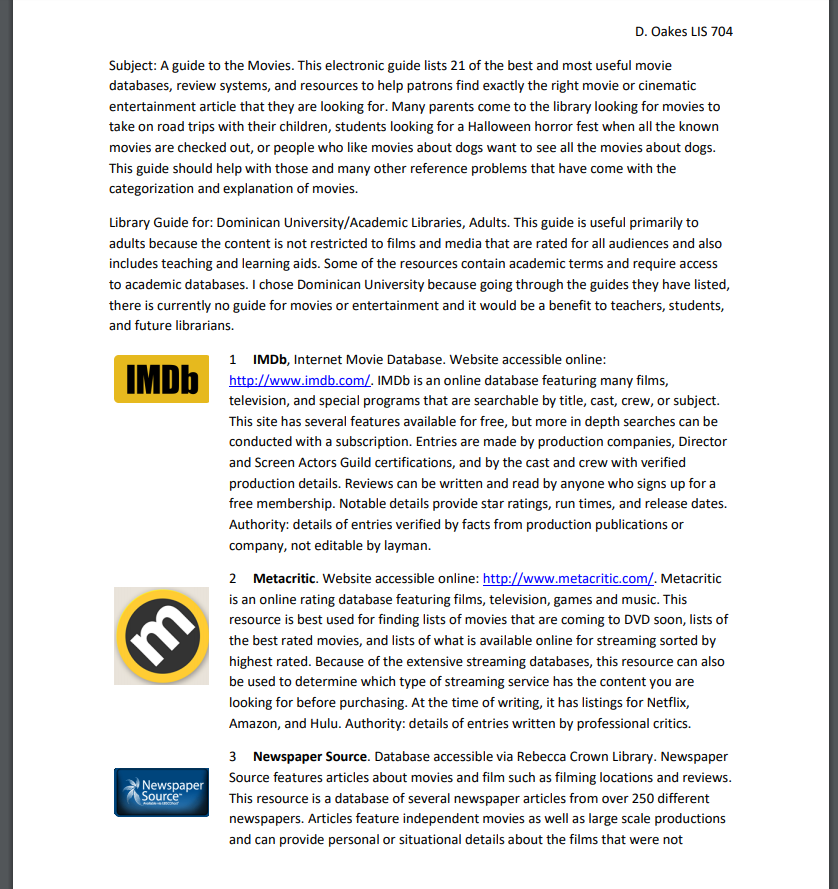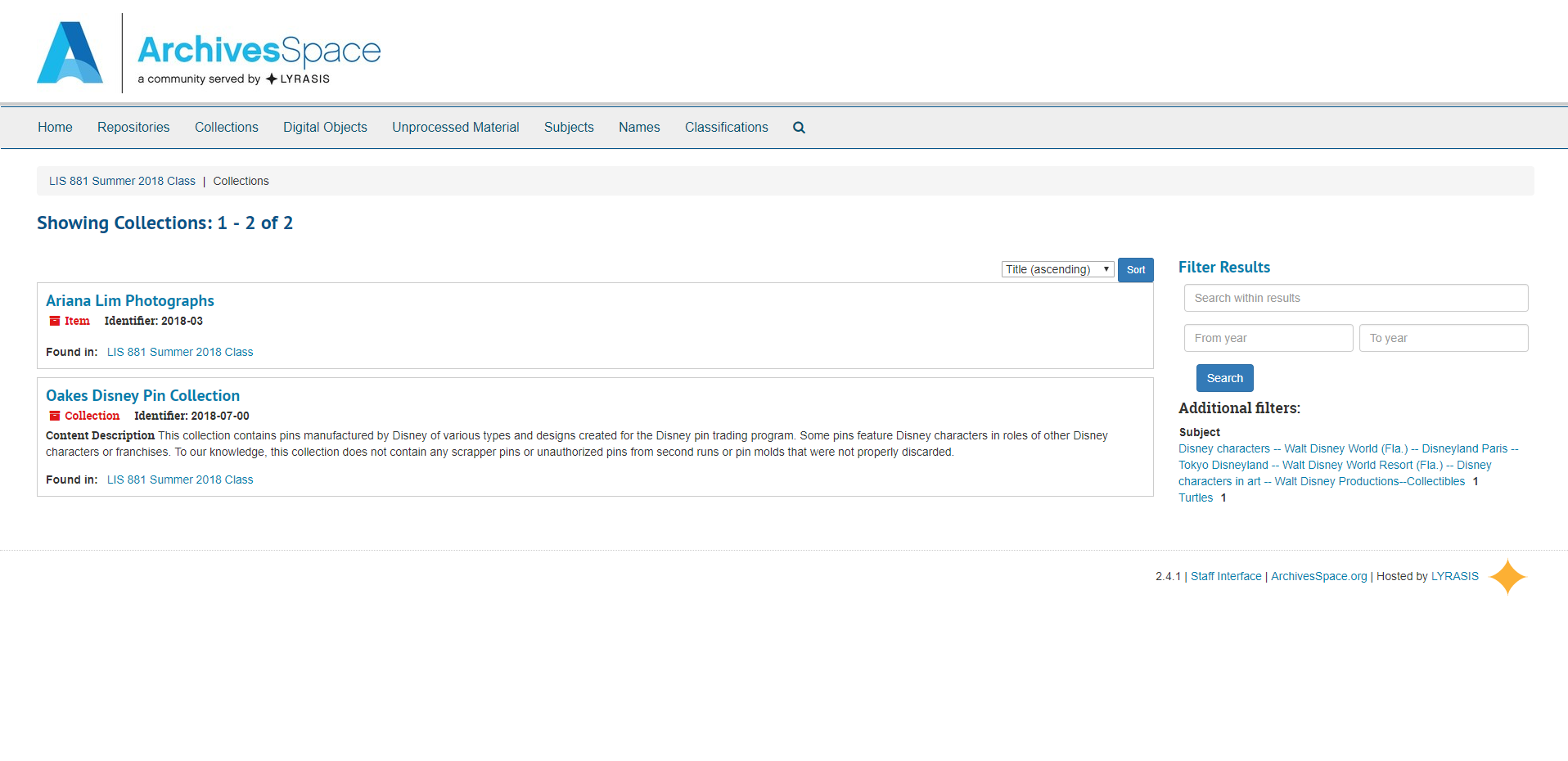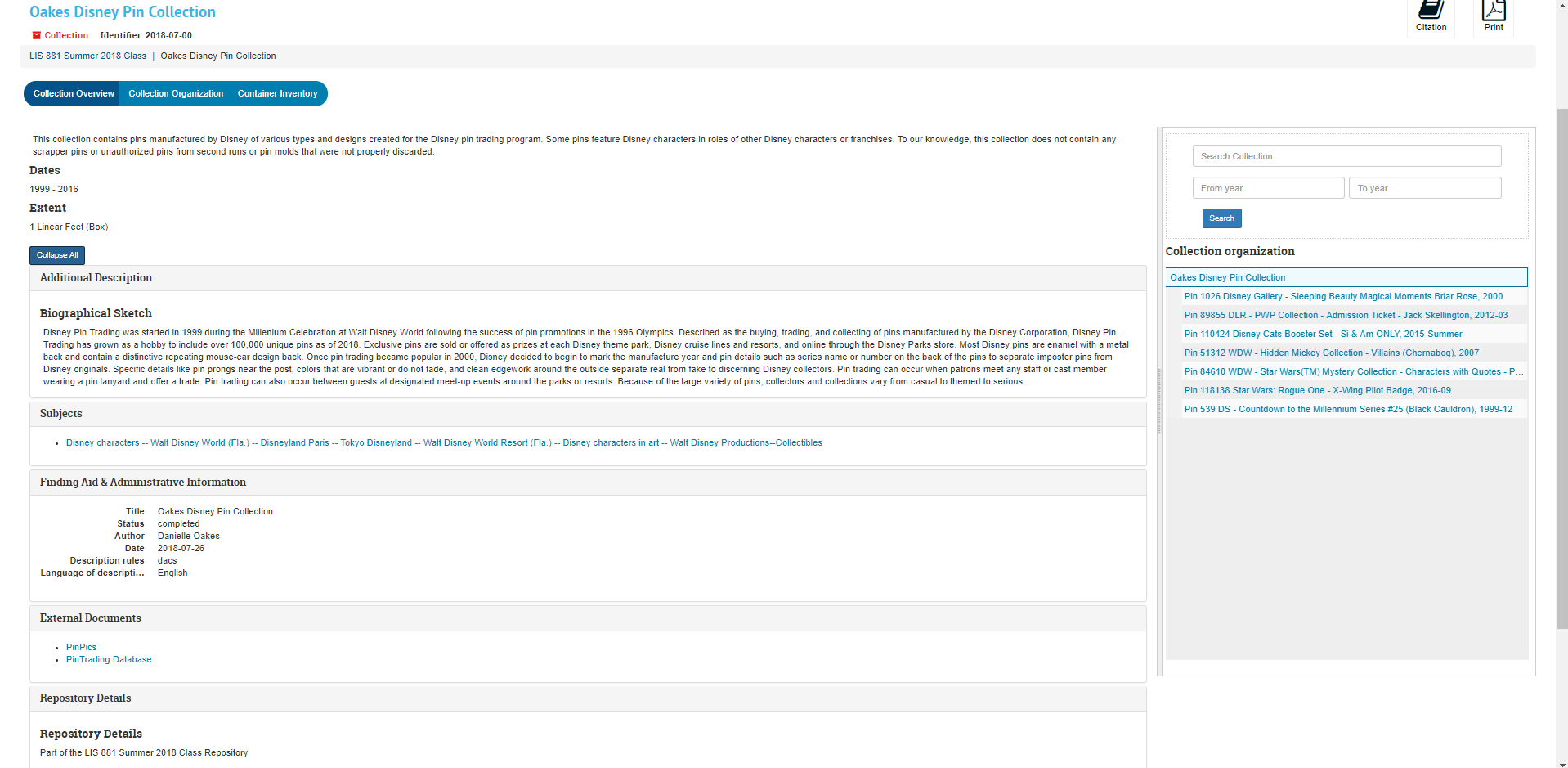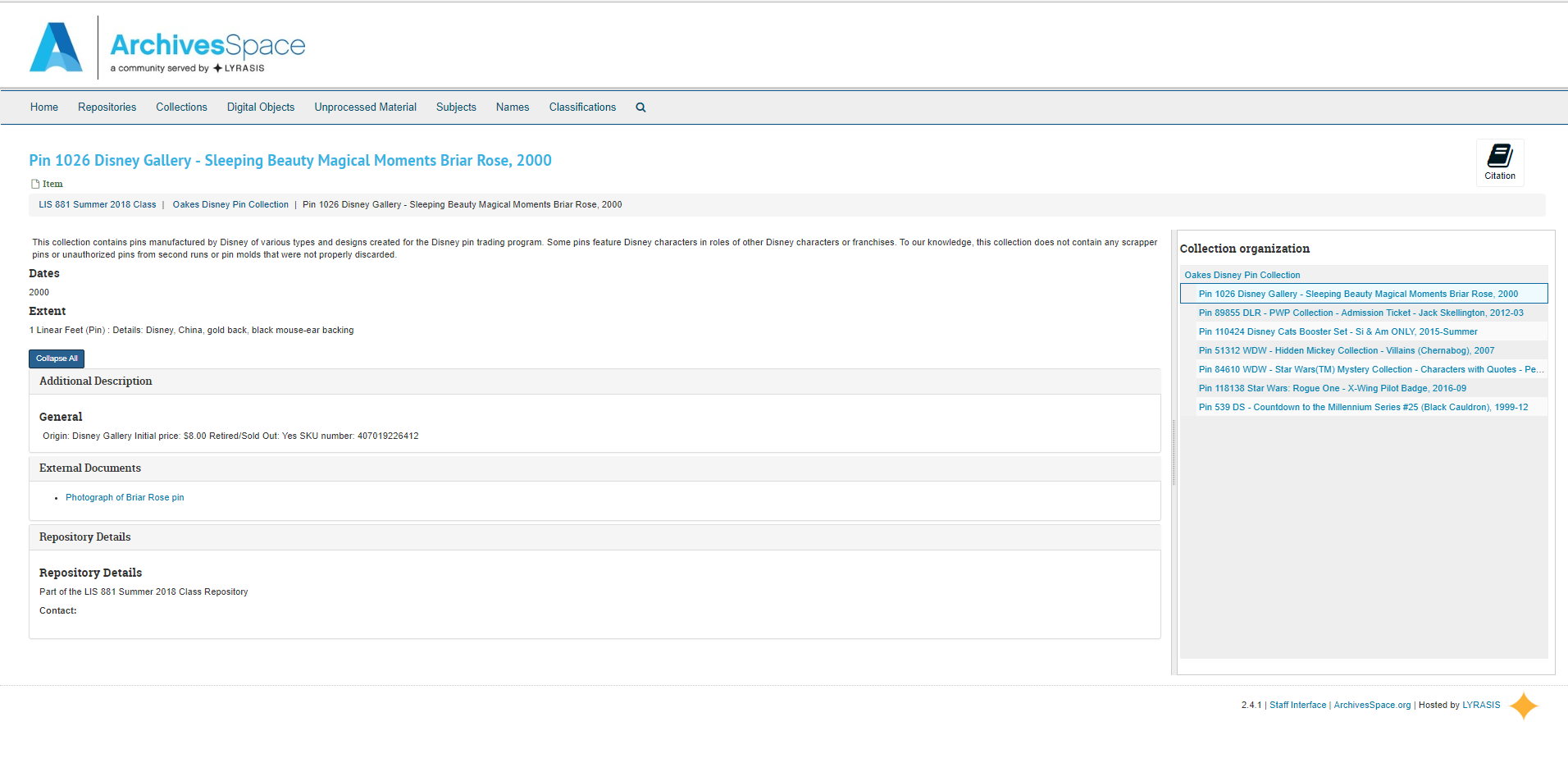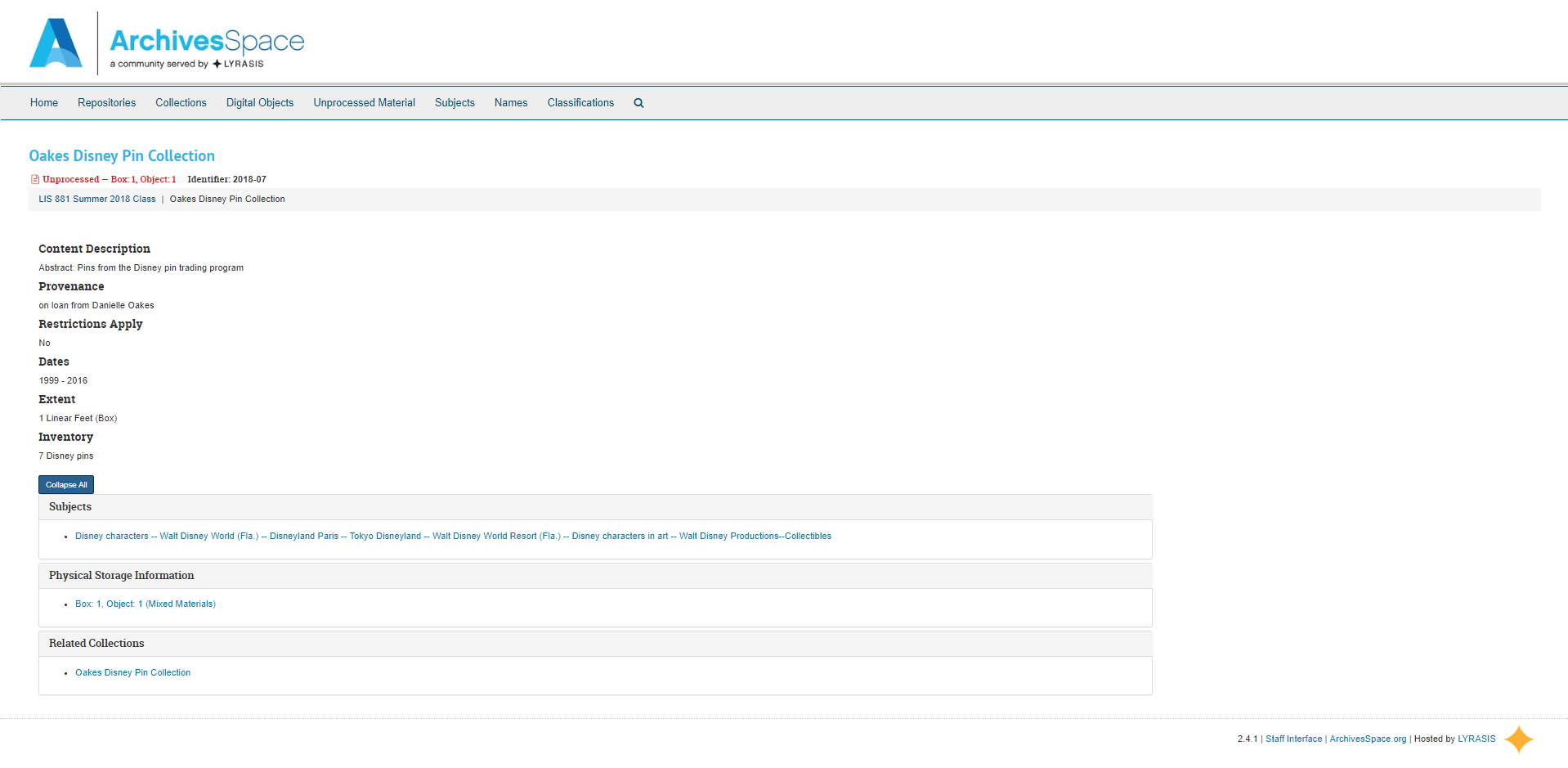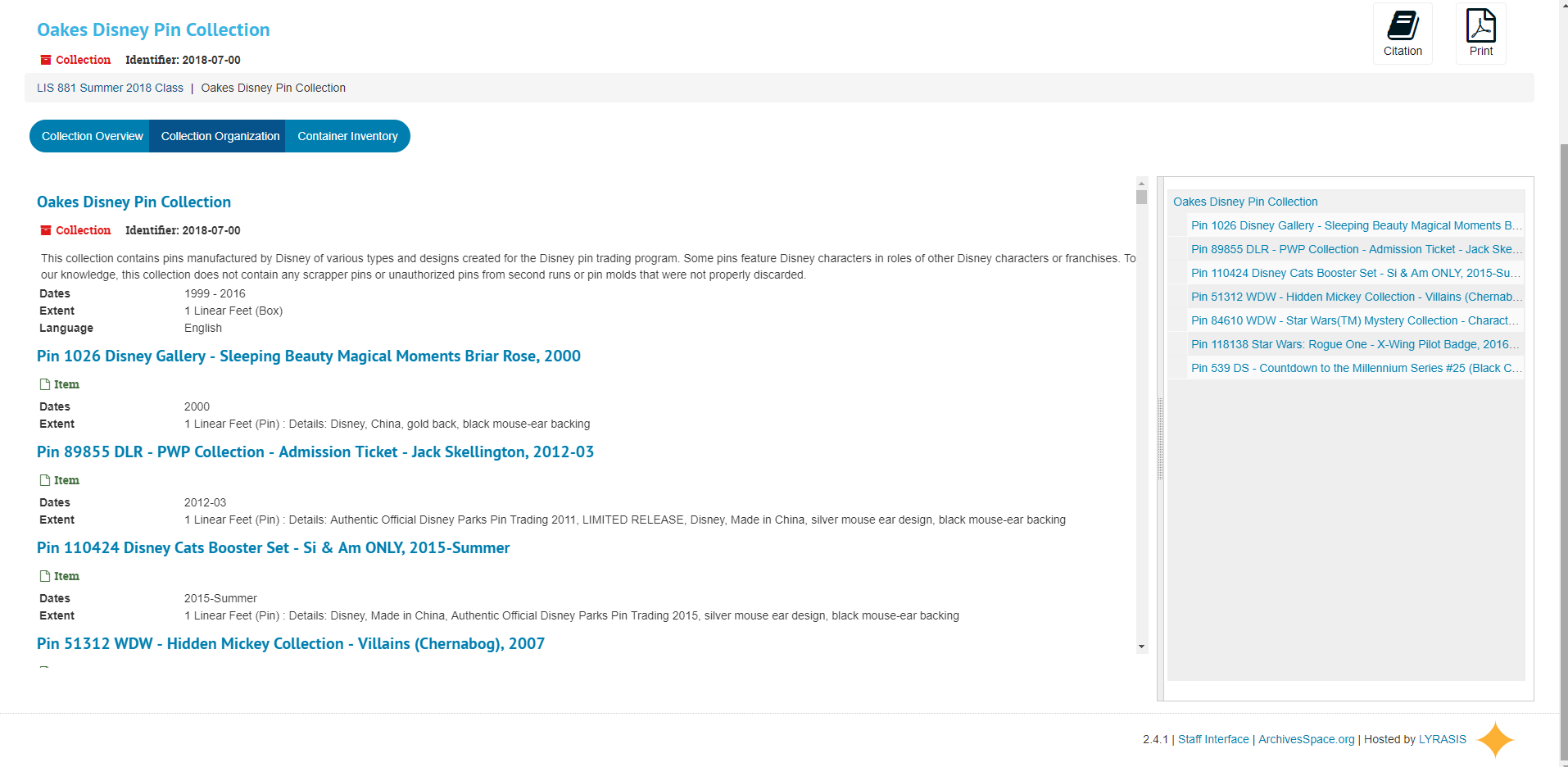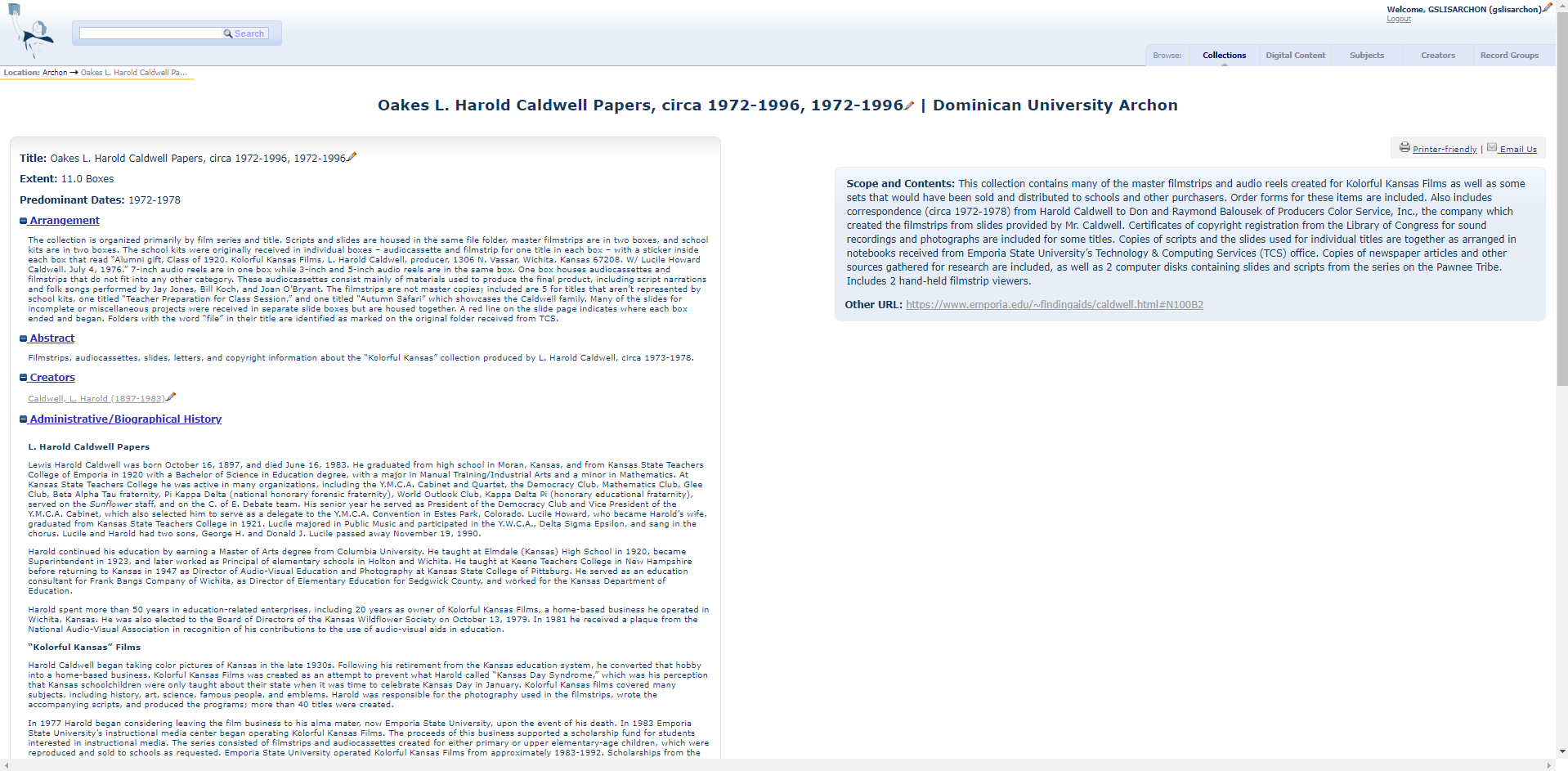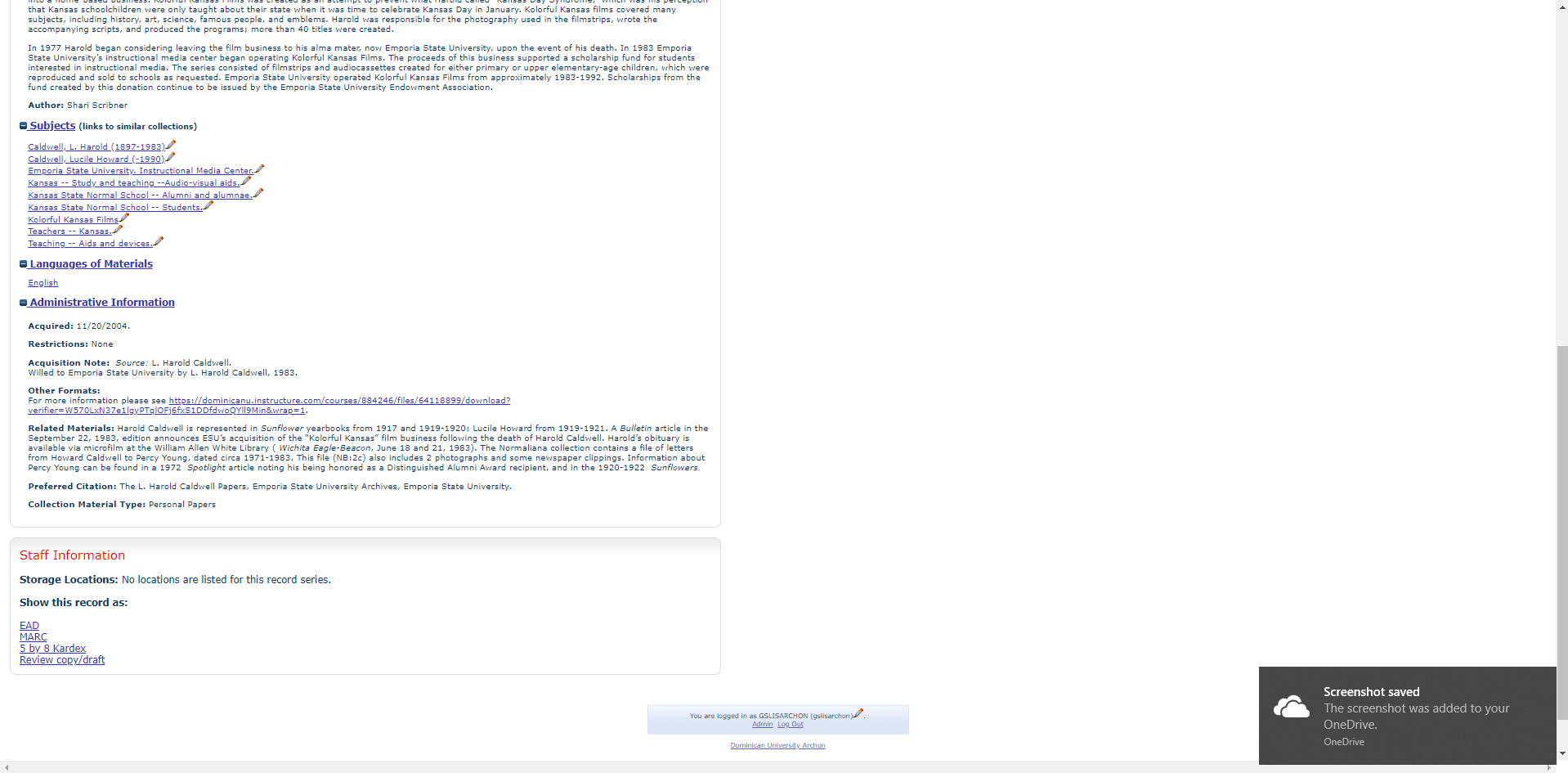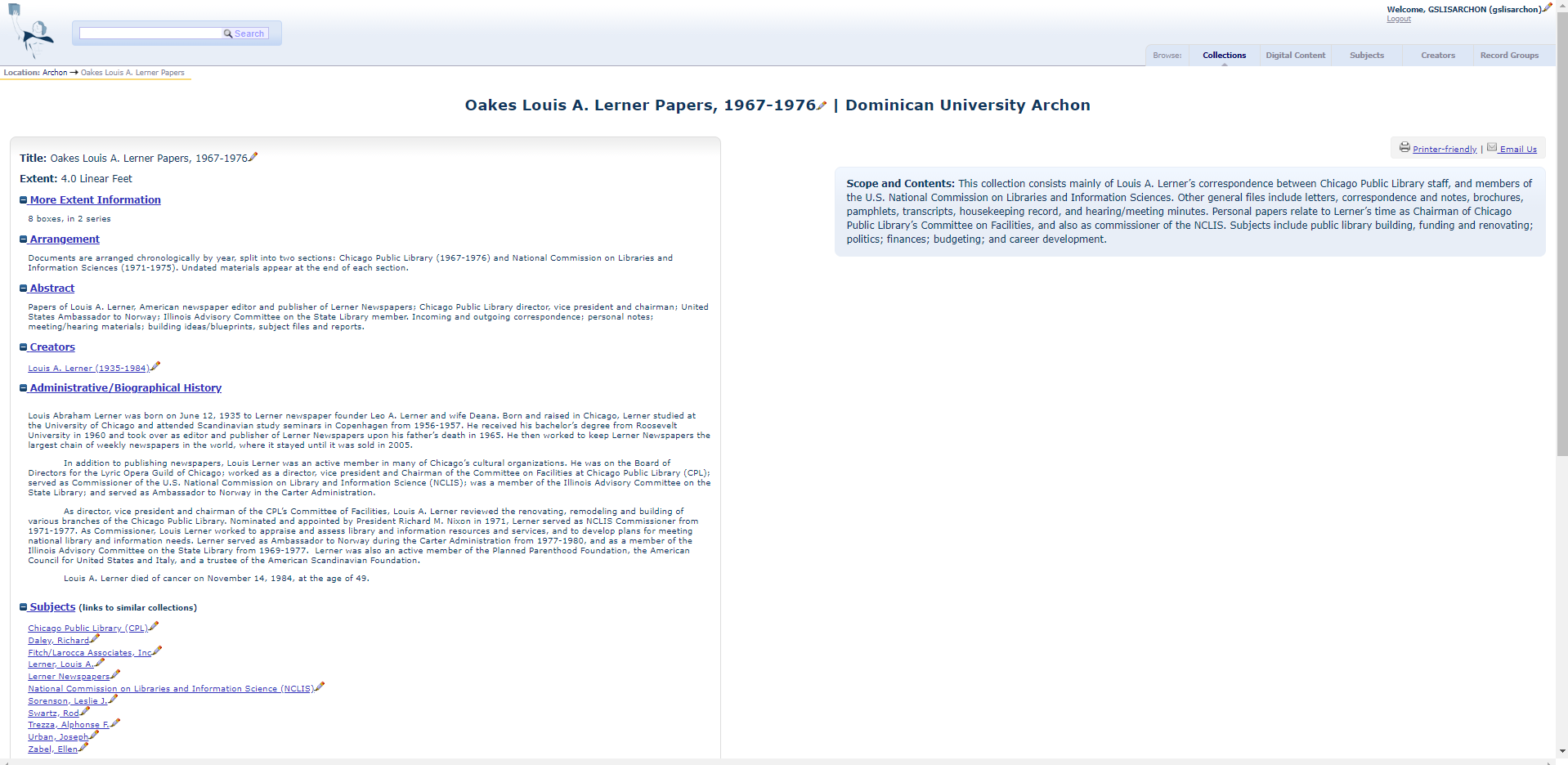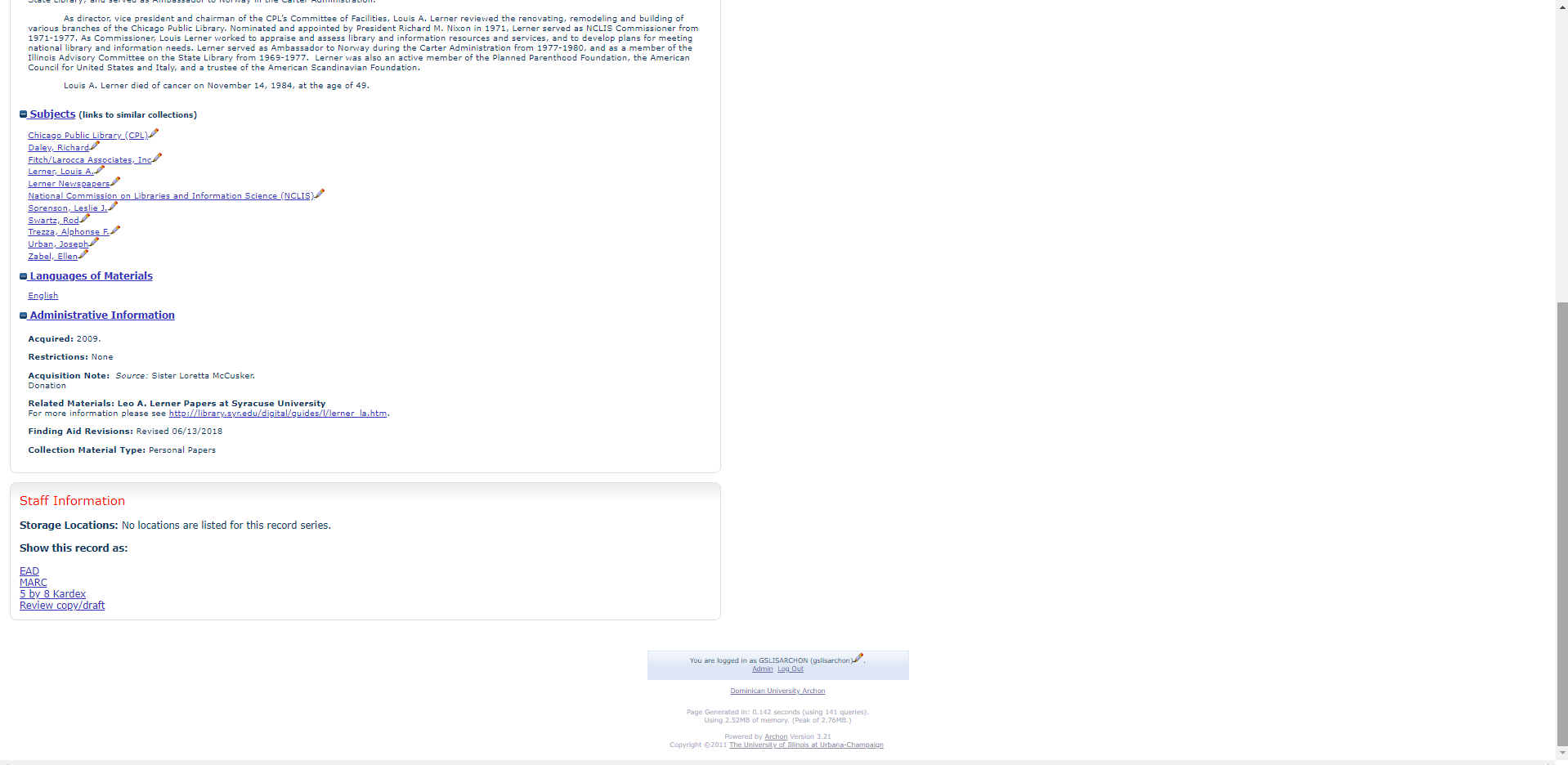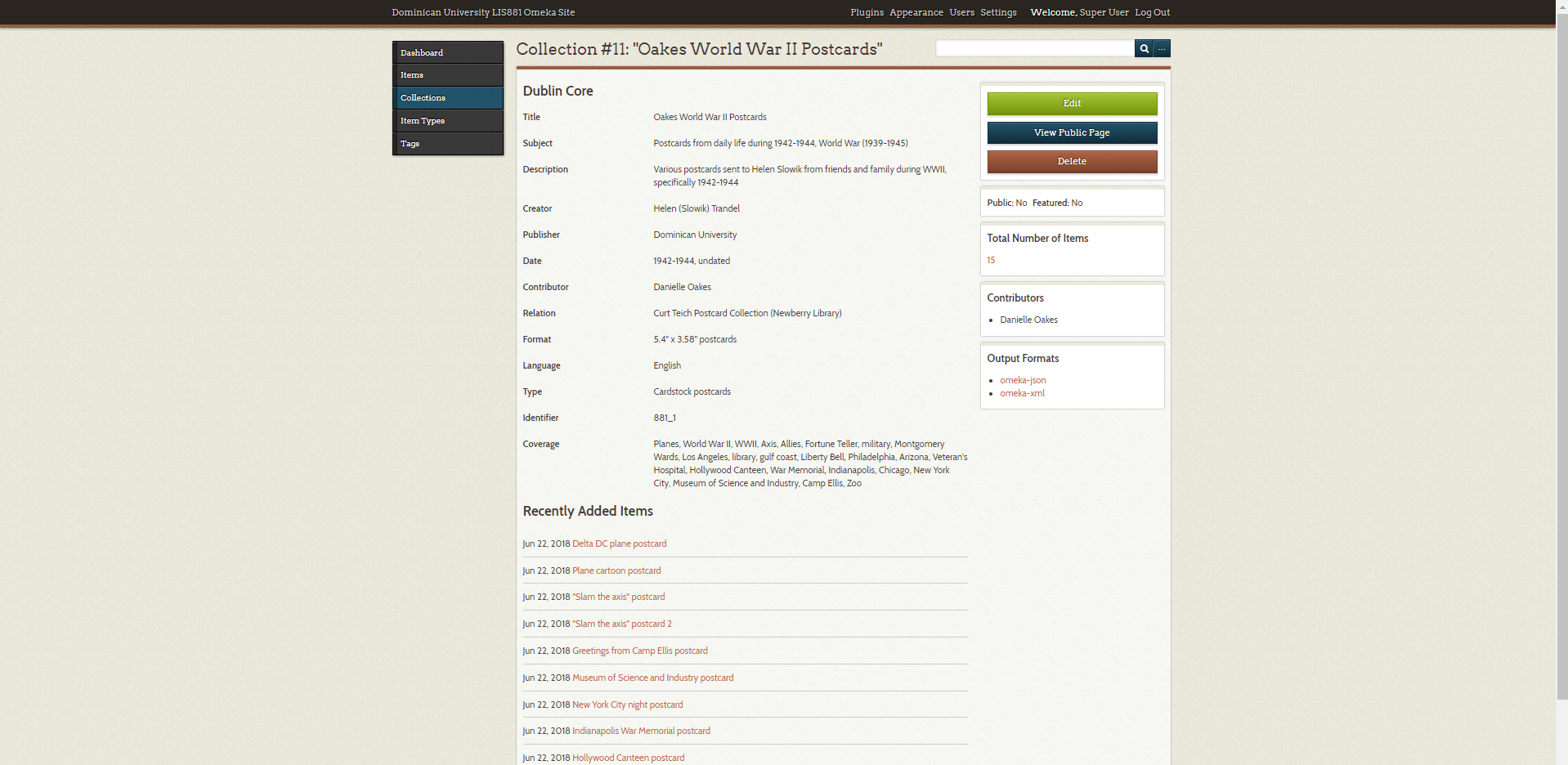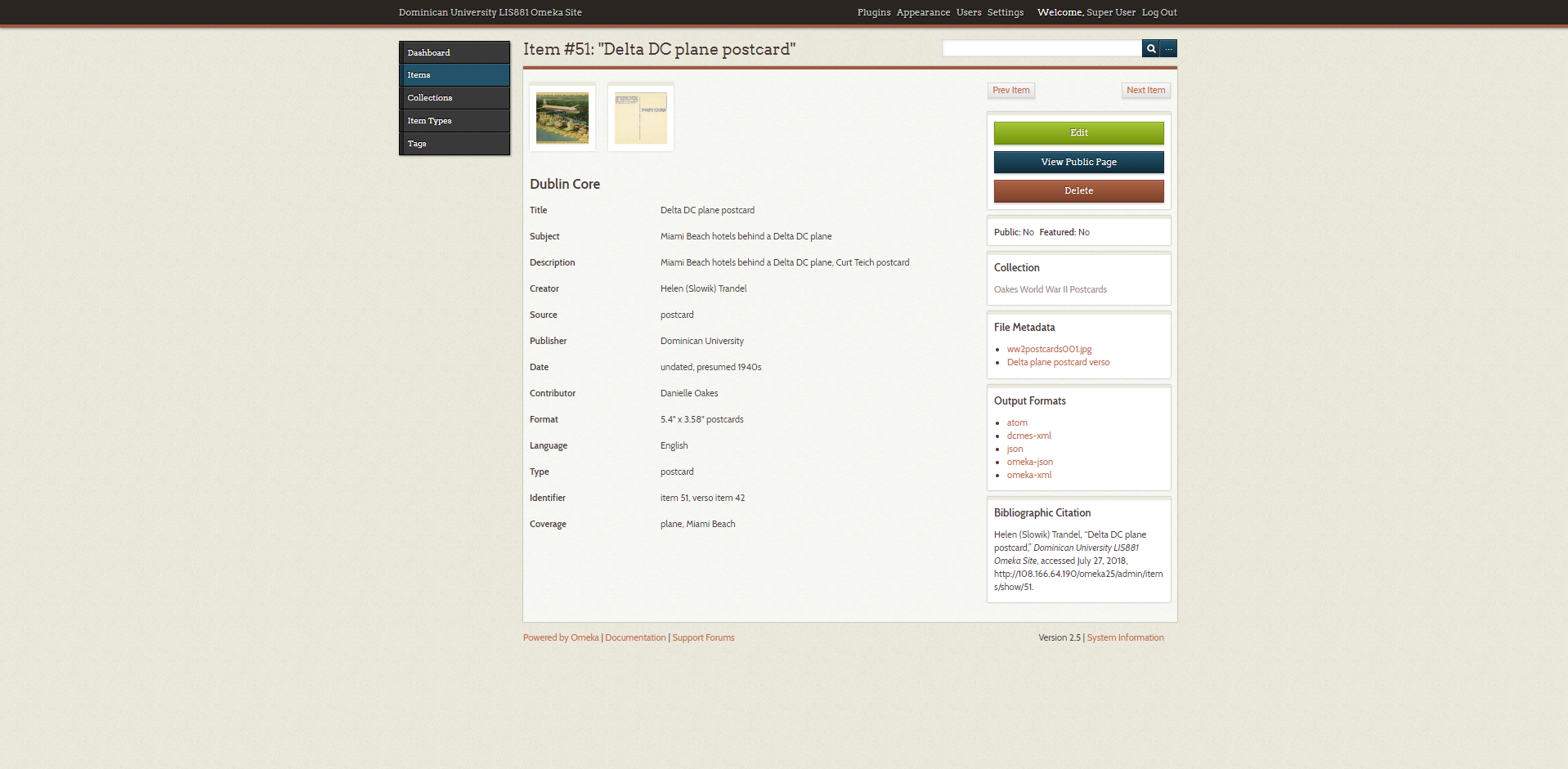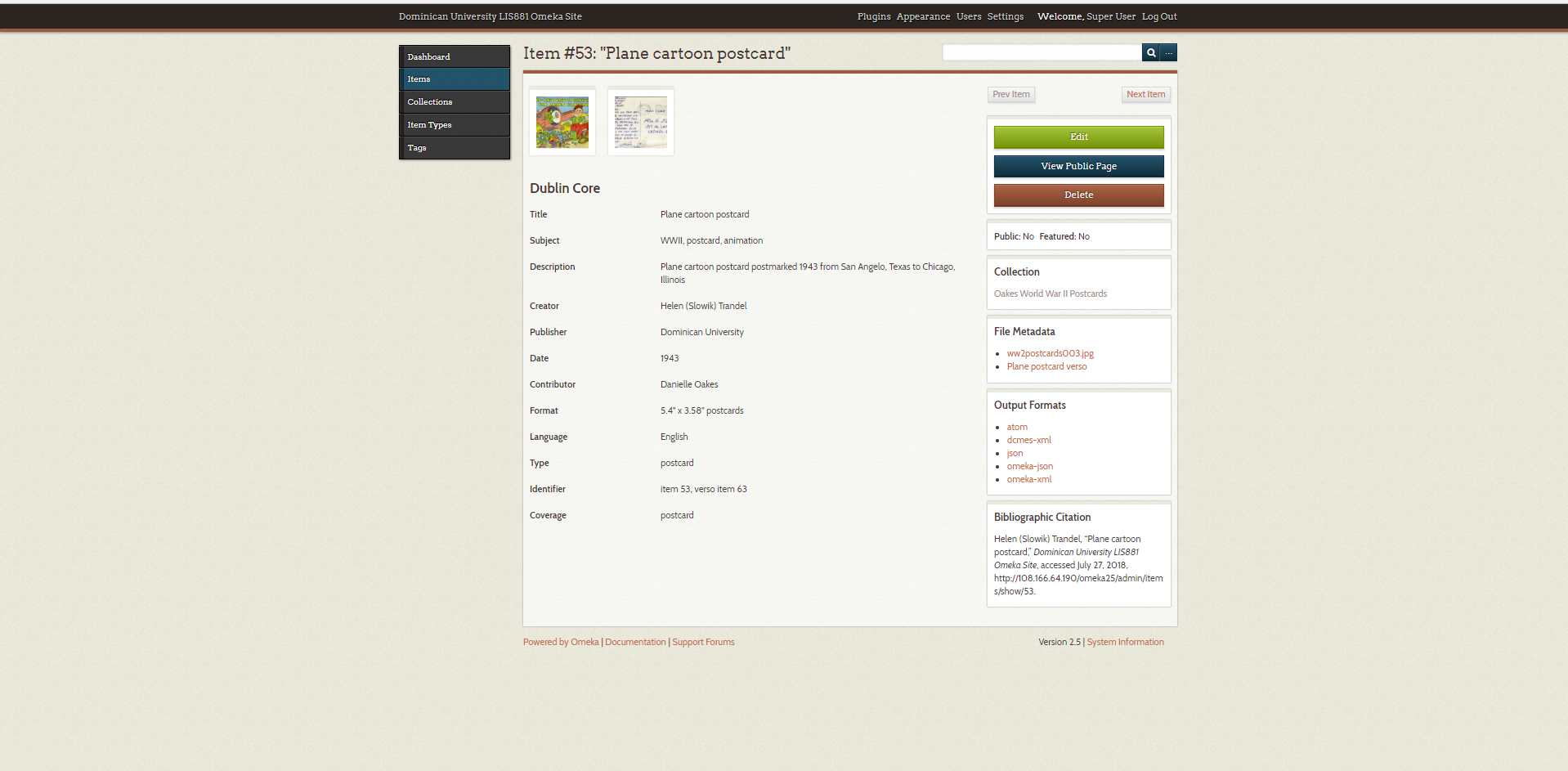Master's of Science, Library and Information Science Curriculum Goals
This is the e-Portfolio of Danielle Oakes in pursuit of a Master's of Science, Library and Information Science at Dominican University.
2.)Understand the essential nature of information and its relevance to society.
- Describe various definitions and concepts of information.
- Explain the impact of information policies on intellectual freedom, access, literacy, information behavior, and other aspects of library and information science.
- Assess the information needs and interests of diverse communities and organizations.
- Develop appropriate responses to information needs.
2a Describe various definitions and concepts of information.
This is a finding aid written for LIS 775 Intro to Archival Principles, Practices and Services taught by Cecilia Salvatore. This assignment outlines specific concepts for record management inventory that enable users to see what an archive collection is composed of before requesting to view the boxes or containers. The terms used in the finding aid are produced using DACS, or Describing Archives: A Content Standard. The definition of what constitutes an archive and what descriptors are required to describe an archive is a changing field. Finding aids define suggested search terms, such as title, extent, or provenance, within the collection so users can see the information and understand what they are looking at without having specialized training in archives. In the example, “Extent: 1 box”, users would know that the collection they were looking for was contained into one box.
Using tools like finding aids help make complex systems of organization accessible to everyone. In Intro to Archives, we were given boxes of a collection and told to organize it. Knowing that archivists cannot change the original order, my group worked on a finding aid that represented the organization's presence and some of the specific contents included in the collection. We addressed those who might look at this collection because they were part of the organization, those who might look at the collection for research, librarians who might be linking similar collections, and the general public who may know nothing about the organization at all. In keeping with these diverse communities, we made our finding aid to include specific and generic elements while following the format of archival finding aids. This finding aid accurately shows how all were included in the process of making a multi-use library or archive reference document and how defining each archival specific term with descriptive examples helped each group to understand the concept of the information.
2c Assess the information needs and interests of diverse communities and organizations.
This is a library guide written for LIS 704 Reference and Online Services taught by Jeanne Holba Puacz. Since communities are diverse and their learning can be on many different levels, library guides are a good resource to provide content in a variety of formats. The goal to assess information needs means that the librarian has to provide a resource that will appeal to many different types of people. While library guides can serve as a base, the librarian still needs to make a connection with the user before they can recommend any particular format or resource. On this library guide, there are different formats of reference, mostly websites and books, that approach descriptions of movies in different ways such as genre, actors, subject, release date, or family-friendly content. Although it may not be inclusive of everything available and might need to be updated frequently with newer publications or editions as more movies are published, it does address a variety of search methods suited for multiple user types.
2d Develop appropriate response to information needs.
These are examples of collections I have created in different archival programs utilized in LIS 881 Advanced Archives taught by Cecilia Salvatore. There are many available programs or interfaces that work as content management systems for archives. Here are examples of three systems: Archon, Omeka, and ArchivesSpace. Each system shows data that users would have in a finding aid and displays it for online searches or digital collections. The Omeka and ArchivesSpace collections include item detail with photographs or scans. Part of information needs is behind the scenes at the input level, or back end. Using systems with complex coding such as XML or EAD schemas require the librarian or record management staff to have knowledge of proper tags and error messages. Using systems with menu interfaces (see those pictured) allows input from users who might not have coding experience. Many of these interfaces can be customized using code to fit into color schemes or layouts with advanced computer knowledge. The other part of information needs is what is in front of the user. Archon, Omeka, and ArchivesSpace all offer different ways to display data queries based on the input fields that are filled in. Who will input the data, who will view the data, how data gets input, which data users will query, and how accessible the data is are all factors to consider when developing an appropriate response to information needs. These examples demonstrate how an MSLIS degree develops the skills needed to create interfaces that fit the needs of various groups and users. Conducting usability studies or conducting an audit of staff and inventory are various ways to determine which system would be best utilized for an institution or organization. (The 12 images below the carousel can be clicked to display the image in the gallery.)

 Contact info
Contact info Email
Email